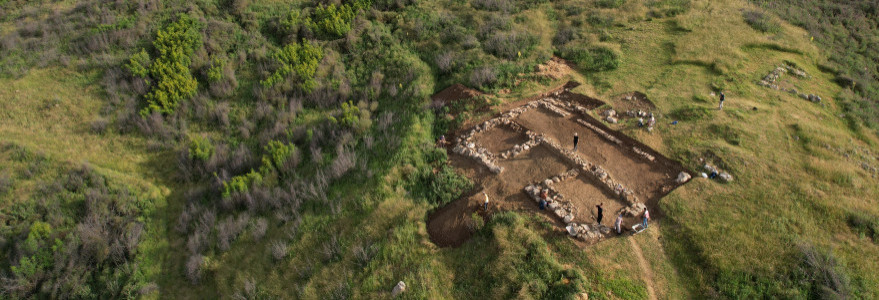A unique building where important political and religious ceremonies might have taken place and a wall system dating back to the Hellenistic period are the discoveries that archaeologists from the Antiquity of Southeastern Europe Research Centre at the University of Warsaw made in the excavation seasons that ended in July. The scientists are conducting research in Albania and Montenegro.
Archaeologists from the UW’s Antiquity of Southeastern Europe Research Centre completed excavation campaigns in Albania and Montenegro in July. In Bushati, Albania, research was carried out on an “unknown city” that UW archaeologists discovered five years ago. It is a vast area near the ancient city of Shkodra, surrounded by Cyclopean walls. Although its name has not been established so far, it is known to have been an important urban centre. This is evidenced by exposed defensive walls and two city gates probably dating from the 4th century BC.
“The results of this year’s excavations confirm this hypothesis. They also indicate that the area additionally had a religious character. Most of the monuments consist of amphorae (including Corinthian ones) and an astonishing number of skyphos – wine drinking vessels of various sizes. The tripartite nature of the architectural setting may suggest that we have discovered a unique building – a prytanejon or hestiateron, that is one of the public structures in which an eternal fire should burn. Important political and religious ceremonies were held in them,” says Prof. Piotr Dyczek from the Antiquity of Southeastern Europe Research Centre at the University of Warsaw.
According to the researchers, the discovery is unusual and surprising as it may prove that the “unknown city” was not only planned and built on the Greek model, but also that, at least in its early period, it had the political and organisational structure of a Greek city.
Roman portico and Hellenistic walls
In ancient Rhizon, Montenegro, fragments of a monumental Roman portico have been uncovered. The archaeologists have so far discovered its remains, 24m long and 5m wide, and the shafts of massive columns over 50cm in diameter. “The front part of the stylobate on which the portico is located was carefully shaped, which indicates that it opened onto a large space, probably the forum,” Prof. Piotr Dyczek points out.
Below the level of the portico, walls from the Hellenistic period (2nd century BC) were discovered. The dating of this construction was made possible by an analysis of the rather thick pavement adjacent to the walls, made of fragments of amphorae and amphorae plugs. This arrangement of the walls proves that there were representative buildings in this area. In the next excavation seasons, researchers will analyse whether these are elements of a Hellenistic agora structure.



